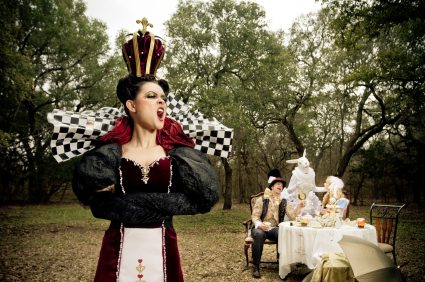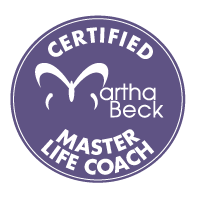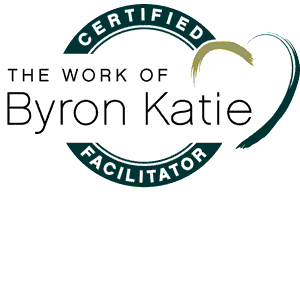Me Too, and Us Together

The courage to tell the truth and then to live it is at the beating heart of my understanding of feminism. I can still clearly recall the precise moment that this knowledge was born.
I was a newly married 21-year-old who had moved from the Midwest of the early sixties, through a time warp and straight to the hive of the counter culture that was Eugene, Oregon in 1969. The university town was becoming a growing refuge for a motley collection of hippies and yippies and draft-dodgers. Many of them had fled north to get away from the dark aftermath of Haight-Ashbury’s famous Summer of Love.
I, on the other hand, was just fleeing my sorority in the Midwest.
On our first day in Oregon my brand-new husband George and I were unpacking our wedding gifts and settling into our first apartment when a scruffy-looking guy came up the stairs to introduce himself. …and to check me out. Somehow I was surprised because I had thought that marriage was going to change all that, to keep me in a safe bubble. A couple of days later he showed up at my door when I was alone. But George happened to show up about that time, and my “admirer” did a quick about-face.
About a month later, Vanessa, one of my new friends, was raped as she was walking alone on campus at night by someone who jumped out of the bushes at her. Within the next week the same thing happened to two more female students. Vanessa was already a timid and shy person, but now she was even more quiet and withdrawn. Our small group of graduate students made sure she never walked alone. One evening while I was walking her home from dinner, I stopped to say hello to my downstairs neighbor and “admirer.” My friend kind of shrunk, becoming almost invisible. When we got home, she said that “that guy” seemed eerily familiar, that he might even be the perpetrator. She agreed to go to the police. We were there for several hours. They took polite notes but said they couldn’t go further “because the other two victims had already left for Christmas and couldn’t be interviewed.” We never heard anything back. As far as I know, the case went unsolved.
This is one of my many “me too” stories, but it’s also a kind of “her too” story. Or an “us too” story, as I soon discovered.
Women’s Rally for NOW, the poster said. Something about it caught my attention, some unresolved feeling left over from my friend’s rape. This was that new group I had vaguely heard about. I was no “women’s libber,” a label the people around me had always used with an eye-roll. But something about the poster, on the heels of my friend’s rape, beckoned me to move straight out of my comfort zone.
I went to the rally by myself because I was pretty sure that men weren’t invited. Never before had I been in such a large group composed entirely of women, and these women were so loud. I wasn’t so sure how I felt about the word “oppression,” but when these women gave true-to-life examples of women’s victimization, I just knew these things. Then some of them started talking about men as “chauvinist pigs.” But there was a funny feeling in my body, like something was popping. It was a bodily sensation that started in the bones and seemed like truth. Each time a new example of the social injustice of being a women was described, I felt the same feeling.
A flush of realization took over. What I saw in bold relief, was the oppression in my own mind. I could see so clearly how I had shrunk to fit the people around me my whole life. And there were other ways I tripped over myself, too. And I couldn’t put it all on “them.”
It was “me,” too. Somehow I knew that THIS was also a part of what needed to change. I knew clearly that I could do something about this, starting right then. All I knew was that the voice inside my head was strong.
I’m not a mic-grabbing kind of gal, but something was different that night. My voice shook, a reverberation that started with my knees and moved up. I was sure what I had to say wouldn’t be popular. But when someone handed me the mic, I said whatever needed to come out. I talked about my own internal obstacles, and made the commitment to starting with my life and cleaning up the ways I sabotaged me, before I started blaming the men in my life. The crowd cheered. Right on, Sister! I was stunned at their response. I had expected an argument. All I knew then was that something was happening, and I was a part of it.
I’m pretty sure I had never heard of the “personal is political” idea, which came to define the “second wave of feminism” which began that year. I’ve since learned that this move toward awareness was happening all around the country at the same time, like seed pods popping. The consciousness-raising groups that followed were “me too” groups, but we were all in the same room. Geographically limited compared to a Facebook movement, but it had its advantages. We told our stories. We held each other’s hands. We also held each other’s feet to the fire, naming and questioning the internal obstacles to being a Strong Woman. Assertiveness groups were born.
Since that day I’ve been in more consciousness-raising groups than anyone I know. And those groups were followed by other women’s circles, book groups, spiritual growth groups, and artists’ and writers’ groups: probably twenty in the last fifty years. I created classes on women’s history and literature studies at high schools. During my 25-year career as a teacher I listened to hundreds of young women. So by now I have heard thousands of stories from women of all ages, describing the ways they have been discounted or humiliated by men.
But what I noticed is that sometimes in the telling and re-telling, people didn’t seem to move on. As they repeated their story, they seemed to rehearse a plot with themselves as victims. All the energy that could be used for real change, to create powerful lives, got lost. They were shrinking to fit.
This is a price that we can’t afford to pay at this time in history. The time is right for abuses to be named and for abusers to be exposed. As we tell our stories and stand together we stand taller. But the vital question is this. Where to go from here? Will the Force within us and among us give us the personal strength to step out, to keep going, to question and change a culture that shapes us in so many ways to lose our inner knowing and strength? Will we make this work so important that we will have the strength that we never admitted to before, starting inside ourselves and manifesting in how we show up in the world? Will we then continue to be moved to act as one, a force of survivors?
Yes. We do need to tell our “me too” stories. This is how we are becoming an “us too,” a collection of women and men who will demand respect for all. We will run for office, we will support our sisters. We will stand tall… taller… together.
And, most important, we will not shrink to fit.
Holy Drifting
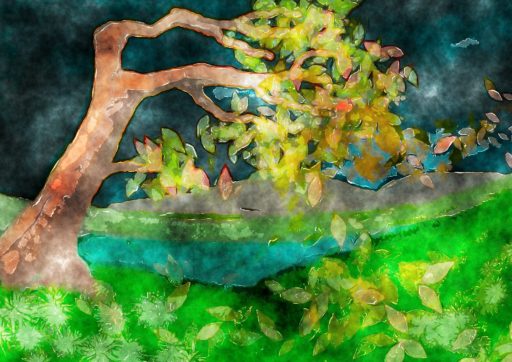
For me autumn is the holiest of seasons. In the Northern Hemisphere, the days are shorter and the slanted light captures the vibrant riot of colors as the leaves drift downward. I like to drift, too, during this time-out-of-time, as the dark gradually takes over and allows more room for silence, for the coziness and candles and comfort from the growing chill. I celebrate these holy days quietly, allowing time to expand, to create enough space to observe the subtle and slower inner movements that draw me into the coming mystery of the dark time of year.
I store it all up as an antidote for the coming racket and good cheer of conventional holidays. Once the calendar moves through the passage we call Halloween, all that inner focus becomes more difficult. It can take considerable focus to keep the “holy” in the busy-ness of the Holiday Season as it expands to fullness and finally spends itself on New Year’s Eve, two months later.
I spent the last couple days in the old growth forest of the Oregon Cascades. Thankful for the opportunity to hang out with the “elders”, I drifted here and there, taking in the brilliant gold of maple leaves that slanted sun rays had lit up on the forest floor. The creek tumbled, and the cedars broadcast their perfume. I let myself be astounded by the vermillion vine maple in front of me, the cedar and pine giants around me, wondering about their long view of the short-living species of humans. Now that the fire danger of the last season had passed, my usual problem-centered brain was taken over by the rhythm of the hike, the gentle musing mode of the unfettered mind.
For a couple of days, I gave up the problem solving mindset, making room for a satisfying substitute, long rambling walks. I immersed myself in The Hidden Life of Trees, a book with enough scientific information to open me wide to the magical ways of the forest and to the perspective of time that two- and three-hundred-year-old trees might offer, as I slowed down and listened. The forest became a wonderland of subterranean mycelium with their slowed-down synapses and immense towering giants, holding court as they absorb the sun’s rays.
When I returned to the cabin from one of my rambles, I sat down to tea by the fire and opened a new book called Devotions, a sweet collection of Mary Oliver’s poems, selected by the author. Immediately, the poem “Drifting” jumped off the page. It’s wonderful to walk along like that, not the usual intention to reach an answer but merely drifting. Once again, one of my favorite poets has captured a moment, a day, a life in just a few words.
Drifting, by Mary Oliver
I was enjoying everything: the rain, the path
wherever it was taking me, the earth roots
beginning to stir.
I didn’t intend to start thinking about God,
it just happened.
How God, or the gods, are invisible,
quite understandable
But holiness is visible, entirely.
It’s wonderful to walk along like that,
thought not the usual intention to reach an
answer
but merely drifting.
Like clouds that only seem weightless.
but of course are not.
Are really important.
I mean, terribly important.
Not decoration by any means.
By next week the violets will be blooming.Anyway, this was my delicious walk in the rain.
What was it actually about?Think about what it is that music is trying to say.
It was something like that.
Today I share this with you, as I return to a world which screams of “problems to be solved,” both personal and political. I can no more block these out than the cries of my children as babies. But whatever actions I take will be informed not just from the problem-solving mind, but from the answers that have come from the holy state of drifting and listening to the elders.
People-Watching at the Mandalay Bay (& Beyond)

A week ago yesterday I sat at the Mandalay Bay Resort in Las Vegas, immersed in my hobby of people-watching. It was the perfect, calm finale to a colorful week of nature and hiking with lifetime girlfriends in Utah’s brilliant landscape. A couple of us had decided to soak up a few more hours of sun while waiting for our evening flights, and my friend suggested we have lunch and loiter at the resort across the way.
While we hung out, I got curious. I had no idea what brought all the fresh-faced young people there. They didn’t fit the image I’d always had of Las Vegas, which I’d only visited once before in my life. I felt blessed by their happiness as they lined up with big inner tubes to float in the pool. I like to think I blessed them back with my eyes as I appreciated their humanity. To me this is the essence of people-watching. It’s like a blessing, a basking in the joy of sharing the planet together in a particular moment, because that’s all we have. Later Sunday I got proof of that.
As we returned to the airport after a couple hours, our Lyft driver Javier pointed to something that looked to me like a construction site.
“There’s a big country-music festival here this weekend, with big stars,” he said.
“My wife is so excited about this guy tonight with a deep voice . . . Jason somebody. She’s going to be in the front row, she says.”
I glanced back over my shoulder at a chain link fence with warning signs. It looked like your basic construction site. Apparently the venue was in a deep pit, I thought.
The next morning, in my bed in Oregon, I began to get texts checking on my safety. One of the first reports described a shooting “like fish in a barrel.” I thought back on the “construction site.” As tuned in as I like to believe I am, I’d had no warning that it could also be a “destruction site.” I wonder still about Javier’s wife.
Disbelief. Shock. And then a parade of the faces from the day before. More disbelief. Tears. A deepening grief. When I told someone about it, my refrain was, This is not about me. My “thoughts and prayers” went into overdrive as I imagined each person I had seen there, now possibly dead or struggling for life.
Next day I saw a drawing of the shooter’s window. That was when I realized the courtyard where I had lunched was a direct shot. Twice as close as the amphitheater. Suddenly my world began to seem less predictable, less like something I would want to take for granted. There have been waves of grief, anger, and shock since then, mixed with tiny flashes of understanding. I’m guessing that insights and perspectives will continue to pop.
It’s too big, too close still for a landing place or a Tidy Take-away. I sit still in “thoughts and prayers” for the victims. I’m not done looking for the best way I can make a small difference when it comes to violence within our country and outside it. But I am committing not to forget or get so fogged in by all the stories and distractions swirling around me in the culture at large.
I truly have no idea why bad things happen. I’m just not in charge of that. But one of my life practices is to find some wiggle room in even the worst of circumstances. It’s sometimes enormously challenging to find a slight break in layers of dark clouds. But I have lived long enough to understand that sometimes something good, some healing comes from tragedy. I put my faith in that. Because from that margin of wiggle room I am more likely to embrace my own life, to embody a loving presence in the dark face of ignorance and insanity. I’m by far more likely to take an action on behalf of wisdom and sanity. And, most important, I’m far more likely to have unclouded judgment about what that action will be.
Photo “Mandalay Bay, Las Vegas,” (c) Erin Khoo, used under CC by 2.0 license
Evacuation & Return
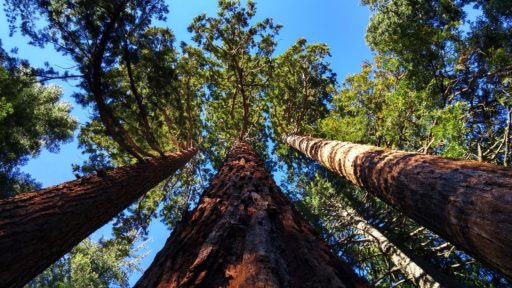
Six weeks ago I spent a quiet weekend at our Cascade cabin, and the first smoke of the overwhelming fire season to come caught my attention. Like the animal that I am, I began to scan my surroundings with the focus that a whiff of danger brings. Instantly I was aware of what was at stake, something I’ve taken for granted for the thirty five years that I’ve visited this old growth forest. I looked up, as if for the first time, and I silently jotted a few words in my journal.
Who are these enormous beings I’ve categorically referred to as trees? I look up. Up. Up. 12 stories up are their heads. Western red cedar, grand fir, yew, mtn. hemlock, chinquapin, from babies to snag-headed old ones. They haven’t moved anywhere all this time, steady. Where have I been until this moment to have missed them?
I went home to the suburban oak savannah where I usually live. The smoke followed. I thought often of the trees in the forest around the cabin and sent a prayer. Then I came across this poem:
Lost
Stand still. The trees ahead and bushes beside you
Are not lost. Wherever you are is called Here,
And you must treat it as a powerful stranger,
Must ask permission to know it and be known.
The forest breathes. Listen. It answers,
I have made this place around you.
If you leave it, you may come back again, saying Here.
No two trees are the same to Raven.
No two branches are the same to Wren.
If what a tree or a bush does is lost on you,
You are surely lost. Stand still. The forest knows
Where you are. You must let it find you.— David Wagoner (1999)
The next month took a certain rhythm. Fire reports every morning. Stair-stepping through the levels of evacuation as the fire approached, less than a mile away. After a while, the cabin didn’t matter any more. I just missed the trees. I imagined them turned to charcoal.
At the end, in a neck-and-neck race between the fires and the rains, the rains came, for five straight days. Just a couple of days ago we got word we can go back. My own particular trees survived. And now, as I prepare to return, it’s to a new landscape. Even though the surrounding forest hasn’t physically changed, I have.
I re-read the poem I stand still, at home with the oak trees, seeing this grove for the first time, each individual tree. Here. They were surrounding me all along, making a place while I worried about the forest in the mountains. And when I do return to the ancient forest, I will pay attention to the breath of the forest, to the answering that says “Here.” And I will listen.
